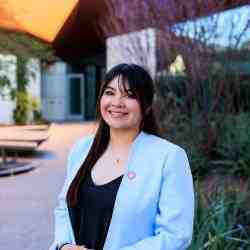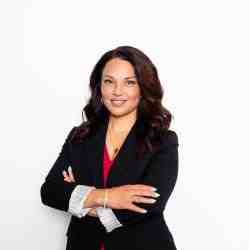Introduction
Lone Koldby is humanizing long-term care for the elderly in Norway by placing activity and social interaction at the center of the care regimens in nursing homes and empowering their occupants to play active roles in designing those regimens and reclaiming their rights as senior citizens.
The New Idea
In an age of continuing development of improved medical treatments for the elderly, Lone’s organization, Aktivitetsdosetten, is addressing the absence of parallel gains in opportunities for revitalizing activity and social interaction in most eldercare institutions. Lone and her colleagues are repositioning the individual as the focal point of care in eldercare institutions. They are changing care practices to ensure that nursing staff consider each person’s individual life experience and needs for social interaction, rather than focusing solely on their physical ailments, in designing and providing care. As a result, nursing homes are transformed into more “caring” and more “humane” institutions and the physical vitality, emotional satisfaction, and mental health of their newly empowered residents are markedly improved.
Lone is mobilizing care staff, family members, volunteers, and residents of eldercare institutions to incorporate a diverse and creative array of new activities and unprecedented social interaction into the previously rigid routines and cultures of eldercare institutions. By training a growing cadre of nurses in such institutions across Norway, as “activity doctors,” Lone is building a more empathetic workforce, motivated by the power of the new activities and social interactions to reduce the reliance on pharmaceuticals to address elderly resident’s needs. In the new regime, the elderly have also assumed more active roles in working with the “activity doctors” and other staff to design individualized plans for activities and social interaction that is more closely aligned with their own interests and life experiences.
Since the formal launching of Aktivitetsdosetten in 2011, Lone has trained 200+ “activity doctors” from various parts of Norway, to implement the program in nine Norwegian nursing homes, and has attracted the attention of several key policymakers in the health field. Because of the universality of the issues that Lone is effectively addressing, the Aktivitetsdosetten approach is also increasingly recognized as an important step forward in addressing a major global challenge.
The Problem
Although Scandinavia is known for its highly efficient and universal healthcare system, many elderly people experience a poor quality of life and insufficient fulfillment of their rights as individuals in nursing homes. To ensure ease of care, nursing staff often prescribe more medicine than necessary, leading to many elderly spending upwards of twelve hours a day sleeping or sitting passively between medicine dosages and meals. Meals are regularly referred to as “feedings” by nursing staff, language that only reinforces the larger societal view of older people as passive. Though there has been an increase in psychotropic drugs prescribed to the elderly in Scandinavia, there is little evidence to support their effectiveness. In fact, the use of psychotropics prescribed to the elderly has increased by more than 60 percent in Norwegian nursing homes since benzodiazepine-sleeping medicines went on the market. Given that the elderly take on average five to ten drugs per day, many are at increased risk for drug interactions, which further compromises one’s health, leading to feelings of disorientation and fatigue at a minimum. A possible side effect of several types of psychotropic drugs, for example, is increasing dementia symptoms such as cognitive impairment.
In addition to the excessive use of medicines in nursing homes, activities are not prioritized in nursing homes, degrading life quality of the elderly. Although Bingo or card game evenings are events that take place universally in many nursing homes, these activities are considered a way to fill time, rather than to assure that the personal preferences of the individuals are fulfilled. As a result, the elderly feel disempowered to participate in activities that lack any connection to their personal background or interests. Without better use of available human resources—family, volunteers, young people, and nursing staff—their poor life quality (and of the nursing staff) will persist. More than 50 percent of Norwegian nurses feel that the elderly need more meaningful activities, connections, and opportunities to socialize, yet they are unable to fulfill those needs because of a lack of know-how and other demands on their time. Family members, friends, young people or volunteers are under-utilized resources that can relieve some of the responsibilities of the nursing staff and improve the happiness of patients. Currently these groups lack easy entry points for visiting and sharing experiences with the elderly.
Within the next ten years, the number of elderly people in Norway will double due to the aging of the baby boomer generation. There is an urgent need to improve the experience for the nursing staff as well as the elderly patients. The Norwegian government has recently released several new active care bills and white papers highlighting the need for new solutions. Unfortunately, however, although policymakers’ thinking is responsive to the need for new, more effective measures to assure that the needs of elderly residents of nursing homes are met, practice lags far behind.
The Strategy
Lone witnessed the prevailing poor quality of life in eldercare institutions when her mother was diagnosed with dementia. In addition, her work as a staff member of a nursing home sharpened her awareness of the pressing need to redesign the provision of services in such institutions so as to assure a much heavier emphasis on residents’ quality of life, including opportunities to pursue their individual interests.
The Aktivitetsdosetten is inspired by the concept of a “dosett,” the Norwegian term for the storage container or pillbox used to facilitate medicine dosages. Before Lone’s work, elderly people’s daily schedules were dictated by the dosages of medicines in these boxes. At the center of Lone’s idea is her vision that a new type of “dosing” becomes commonplace. She has designed the program around the concept that the “dosage boxes” for elderly patients can be filled with activities, not just drugs or medicine. In sum, she is creating a new norm for the inclusion of individualized activities and social interactions in the daily lives of residents of eldercare institutions with the same priority as that assigned to the management and implementation of medication regimens.
A core component of Aktivitetsdosetten is the training of relevant staff at each of the eldercare institutions that participate in the initiative as “activity doctors.” The individuals who are thus trained include, at a minimum, the head nurses of and those who play key roles in devising and implementing the services provided to the institutions’ residents. Lone begins the training program by asking the participants to examine how they would want to be treated if they were a resident of an eldercare institution, and, building on that base, asks each trainee to reflect on her/his role in helping the residents achieve the quality of life to which they aspire.
In the course of their training the participants also examine their roles in the development and use of an individualized activity dosett for each of the residents where they are employed. Unique to Lone’s program, the activity dosett is an individualized activity plan created by each resident, with the support of the family members, volunteers, and staff members where they reside. Instead of relying only on the widely prevailing “one-fits-all” approach to organized activities (such as Bingo and card playing nights), the activity dosett responds to individual preferences and choices by permitting each resident that has opted for the Aktivitetsdosetten approach, to select from a wide-range of options (e.g. dancing, singing, painting, walking, playing with animals, among others). The selected activities have demonstrably improved the quality of life and sense of purpose of their participants.
Lone has created a Felleskatalog, a book filled with activities that the nurses can “prescribe” based on patients’ interests, which resembles the book of medical remedies used by doctors to determine treatment. Similar to dosing medication, Lone has created strict expectations that the activity dosages will be implemented as recommended in the activity plan. No dosett can be older than six months, and the plan is evaluated every three months. Recognizing that staff, volunteer networks, government, and also the elderly are eager for change once the right tools are in hand, Lone designed an Activity Suitcase in 2011 for nursing home staff as the initial phase of what is today known as Aktivitetsdosetten. She received initial funding from the municipality of Stavanger to test her Activity Suitcase, which early on, was comprised of the tools needed to introduce a new emphasis on activities responsive to the needs and desires of residents of eldercare institutions. The Activity Suitcase includes brief descriptions of a sizeable menu of suggested activities and suggests promising strategies for engaging family members and volunteers in their implementation. Lone’s long-term goal is that these tools, and the tracking of activity dossets will soon be entirely electronic, and thus minimize the initiative’s demands on staff time and financial resources.
In early 2001, in an effort to assess both the feasibility and the benefits of the Aktivitetsdosetten approach to address the needs of the residents of eldercare institutions, Lone worked with four patients in one ward of a nursing home in Stavanger (where she was then employed) to map their daily schedules, medications, and number of sleeping hours, and, once those data were collected and analyzed, she worked with those patients and the relevant healthcare staff, to devise weekly “activity plans” responsive to individual interests. When the activity plans were implemented, Lone and her colleagues witnessed a major transformation almost immediately from passive, sedentary individuals to more active, and visibly happy people. They were walking and talking more frequently and more energetically, breathing more easily, and sleeping without the assistance of sleep-inducing medication. In response to those discoveries, the relevant staff members of the nursing home were also more energized and motivated to perform their duties. Cheered by those readily visible changes, Lone was persuaded that the time had come to devote her full energies to the development and spread of her highly promising new approach to address the needs of residents of eldercare institutions and to form an organization to systematize and expand the approach to other Scandinavian settings, and later, to other parts of Europe.
The Person
Lone was born in Denmark, where, after completing high school, she began her work with the elderly in a rehabilitation center. Inspired by her mother’s experience in battling polio as a child, she later trained to become a physiotherapist, and, in her work in that field, she found that even the small changes that she was able to facilitate in the mobility of the older people with whom she was working transformed their self-perceptions and sense of well-being.
In 2000, Lone began working in nursing homes in Norway, where she became all too familiar with the depressing sight of overmedicated people, and she was increasingly persuaded that their rights as sentient individuals were being routinely violated. Those concerns were soon heightened, at an even more personal level, when her mother was diagnosed with dementia while living in a nursing home. Reaffirmed by her mother’s experience, Lone recognized the power of activity as a key indicator of a person’s well-being and an effective tool for their empowerment.
In 2009, in pursuit of that conviction, Lone designed, built, and managed a “school for seniors” in Øyane Sykehjem, Norway. It offers classes to seniors in a wide-range of subjects (including exercise, food and wine, arts, and politics), and she continues to head the Board today.
Lone was soon persuaded to create more active, engaged, and fulfilling lives for elderly people, as an employee of a nursing home with its own set of bureaucratic rules and policies, which led to her to establish Aktivitetsdosetten.

 Tile image
Tile image

